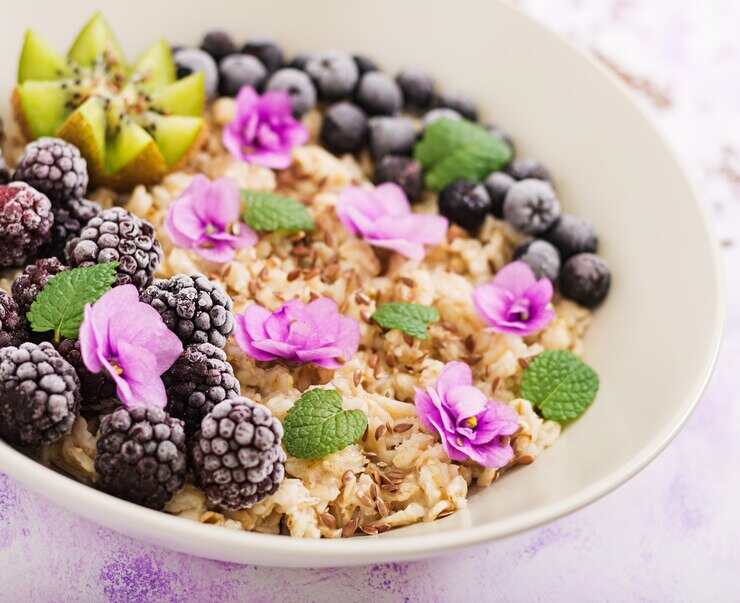Matcha has quickly grown from a ceremonial Japanese tea to a global wellness staple, appearing in lattes, smoothies, desserts, and even supplements. But as its popularity has soared, so has curiosity about whether this vibrant green powder truly delivers on its health promises. Many ask: Is matcha healthy, or is it just another wellness fad?
Unlike regular green tea, where leaves are steeped and discarded, matcha is made by finely grinding entire green tea leaves into a powder. This unique preparation means you consume the whole leaf, providing a concentrated dose of nutrients, antioxidants, and caffeine. Supporters highlight its ability to boost focus, support metabolism, promote heart health, and even improve skin. At the same time, questions about caffeine sensitivity, digestive side effects, and product quality remain.
This article explores the health benefits, risks, and practical ways to enjoy matcha—with evidence-based insights to help you decide how it fits into your daily routine.
Matcha and Its Health Benefits
Matcha originates from Japan, where it has been part of tea ceremonies for centuries. It is made by shading tea plants before harvest to boost chlorophyll and amino acid content, then steaming, drying, and stone-grinding the leaves into a fine powder. Unlike steeped tea, matcha delivers the full nutritional profile of the leaf.

Origins & How It’s Made vs Green Tea
Matcha comes from the Camellia sinensis plant, the same source as regular green tea. The difference lies in cultivation and preparation. Tea plants for matcha are shade-grown for 3–4 weeks before harvest, which boosts chlorophyll and amino acid levels. After harvesting, the leaves are steamed, dried, and stone-ground into a fine powder. Unlike green tea, which is steeped and discarded, matcha is consumed in its entirety—delivering a more concentrated dose of nutrients.
Rich in Antioxidants
Matcha is exceptionally high in catechins, particularly EGCG (epigallocatechin gallate), a powerful antioxidant linked to reduced inflammation and lower risk of chronic disease. Antioxidants protect cells from oxidative stress, a factor in aging, cancer, and cardiovascular problems. Matcha’s antioxidant content is far higher than that of regular green tea.
Boosts Energy and Focus
Matcha provides about 70 mg of caffeine per serving, but thanks to L-theanine, its effects are smoother than coffee. L-theanine promotes calm alertness, creating a balanced state of focused energy without jitters or crashes.
Supports Weight Loss
Research suggests that matcha enhances thermogenesis (the body’s calorie-burning process) and supports fat oxidation during exercise. Drinking matcha before workouts may improve endurance and calorie burn, making it a popular aid for weight management.
Promotes Heart Health
Studies link matcha consumption to improved cholesterol profiles—lower LDL and higher HDL—as well as better blood pressure regulation. Together, these effects can help reduce cardiovascular risk when part of a balanced lifestyle.
Benefits for Skin Health
Matcha’s antioxidants help protect against UV damage, inflammation, and premature aging. Drinking it may reduce redness and improve skin elasticity. Some skincare products also use matcha extracts for their soothing, anti-inflammatory effects.
Risks and Side Effects of Matcha
While matcha is widely praised for its antioxidants and wellness benefits, it’s not risk-free. As with any concentrated food, moderation and quality sourcing are essential. Here are the main concerns:
Caffeine Sensitivity
Matcha contains more caffeine than regular green tea—about 30–70 mg per serving, depending on preparation. For most people, this amount is energizing, but for others it can cause:
- Insomnia or restless sleep (especially when consumed late in the day)
- Jitters, anxiety, or irritability
- Heart palpitations or faster heart rate
👉 Those with anxiety, arrhythmias, or caffeine sensitivity should limit intake to ½ serving daily or avoid it altogether.
Digestive Upset
Matcha contains tannins, which may increase stomach acid and cause nausea when consumed on an empty stomach. Overconsumption can also lead to bloating or mild diarrhea.
✅ To reduce risk: drink matcha with food and stick to 1–2 cups daily.
Heavy Metal Contamination
Because matcha involves consuming the whole leaf, contaminants such as lead or arsenic—absorbed from soil—can be ingested in higher amounts. Low-quality or non-certified products carry greater risk.
✅ Choose organic, ceremonial-grade Japanese matcha from trusted suppliers with third-party testing.
👉 Bottom line: Matcha is safe for most adults when limited to 1–2 servings of high-quality powder daily.
How to Incorporate Matcha into Your Diet
Adding matcha to your daily routine can be both enjoyable and beneficial, but balance is key. Here are the best ways to include it without overdoing it.
Best Ways to Consume Matcha
- Traditional tea: Whisk ½–1 teaspoon of matcha powder with hot (not boiling) water for a smooth, frothy drink.
- Lattes: Blend matcha with milk or milk alternatives such as oat, almond, or soy for a creamy energy boost.
- Smoothies: Add matcha powder to fruit- or protein-based smoothies for extra antioxidants.
- Baking & cooking: Matcha works well in muffins, pancakes, energy bites, and even savory recipes.
- Supplements & powders: Some prefer capsules or pre-mixed powders, but whole-leaf matcha offers the most benefits.
When to Drink Matcha
- Morning or early afternoon: Ideal for steady energy and focus during the day.
- Pre-workout: Can improve endurance and fat burning when consumed before exercise.
- Avoid late evenings: Caffeine content may interfere with restful sleep.
How Much Matcha is Safe Daily?
- General guideline: 1–2 teaspoons (1–2 grams) per day is considered safe for most healthy adults.
- Caffeine sensitivity: Those prone to jitters, anxiety, or sleep disruption may prefer just ½ teaspoon daily.
- Pregnant or breastfeeding: Limit intake and consult a doctor, as caffeine should be restricted to <200 mg/day.
👉 Bottom line: Matcha can be versatile and health-supportive when enjoyed in moderation, especially when paired with balanced meals.
How to Incorporate Matcha into Your Diet
Adding matcha to your daily routine can be both enjoyable and beneficial, but balance is key. Here are the best ways to include it without overdoing it.
Best Ways to Consume Matcha
- Traditional tea: Whisk ½–1 teaspoon of matcha powder with hot (not boiling) water for a smooth, frothy drink.
- Lattes: Blend matcha with milk or milk alternatives such as oat, almond, or soy for a creamy energy boost.
- Smoothies: Add matcha powder to fruit- or protein-based smoothies for extra antioxidants.
- Baking & cooking: Matcha works well in muffins, pancakes, energy bites, and even savory recipes.
- Supplements & powders: Some prefer capsules or pre-mixed powders, but whole-leaf matcha offers the most benefits.
When to Drink Matcha
- Morning or early afternoon: Ideal for steady energy and focus during the day.
- Pre-workout: Can improve endurance and fat burning when consumed before exercise.
- Avoid late evenings: Caffeine content may interfere with restful sleep.
How Much Matcha is Safe Daily?
- General guideline: 1–2 teaspoons (1–2 grams) per day is considered safe for most healthy adults.
- Caffeine sensitivity: Those prone to jitters, anxiety, or sleep disruption may prefer just ½ teaspoon daily.
- Pregnant or breastfeeding: Limit intake and consult a doctor, as caffeine should be restricted to <200 mg/day.
👉 Bottom line: Matcha can be versatile and health-supportive when enjoyed in moderation, especially when paired with balanced meals.
Frequently Asked Questions (FAQs)
Is matcha healthier than coffee?
Matcha and coffee both have unique benefits. Coffee contains more caffeine per cup (about 90–120 mg vs. 30–70 mg in matcha), making it a stronger stimulant. Matcha, however, combines caffeine with L-theanine, which provides calm focus without jitters. It’s also richer in antioxidants, especially EGCG, compared to coffee. For those seeking a gentler energy boost plus added nutritional value, matcha may be considered the healthier choice.
Can matcha help with weight loss?
Yes, when combined with a healthy diet and exercise. Matcha contains catechins that may boost thermogenesis (calorie burning) and improve fat oxidation during workouts. While matcha isn’t a magic weight-loss drink, research supports its role in helping with metabolism and endurance. Drinking 1–2 cups daily before exercise can enhance results.
Does matcha detox the body?
The idea of “detox” is often misunderstood. Matcha doesn’t literally flush toxins from your system. Instead, its antioxidants support the liver and cellular health, reducing oxidative stress and inflammation. This contributes to the body’s natural detoxification processes. So while matcha is beneficial, it should be seen as part of an overall balanced diet rather than a detox cure.
Is it okay to drink matcha every day?
For most healthy adults, yes. 1–2 servings per day is generally safe and provides maximum benefits without excess caffeine. More than 3–4 servings may lead to sleep issues, digestive upset, or nutrient absorption concerns. Moderation and quality sourcing are key.
Can pregnant women drink matcha?
Pregnant women should limit caffeine intake to under 200 mg per day. Since matcha contains about 30–70 mg per cup, one small serving is usually safe, but it’s important to consult a healthcare provider. Avoid low-quality matcha, as contaminants like lead can pose risks during pregnancy.
Conclusion
Matcha is more than just a trendy drink — it’s a nutrient-dense tea with a long history of use and a growing body of scientific support. Thanks to its concentrated levels of antioxidants (especially EGCG), L-theanine, and caffeine, matcha can offer unique benefits for energy, focus, weight management, heart health, and even skin wellness. Its gentle, sustained boost makes it a great alternative to coffee for many people.
Still, matcha isn’t without risks. Too much can lead to caffeine-related side effects, digestive discomfort, or nutrient absorption issues. Quality also matters: since you consume the whole leaf, low-grade powders may contain contaminants like lead or heavy metals. That’s why choosing ceremonial-grade Japanese matcha from reputable sources is essential.
The bottom line? 1–2 servings per day of high-quality matcha is safe for most adults and can be a valuable addition to a balanced diet. Whether you enjoy it as a traditional tea, a frothy latte, or blended into smoothies, matcha can be both a healthy and enjoyable daily ritual.






















